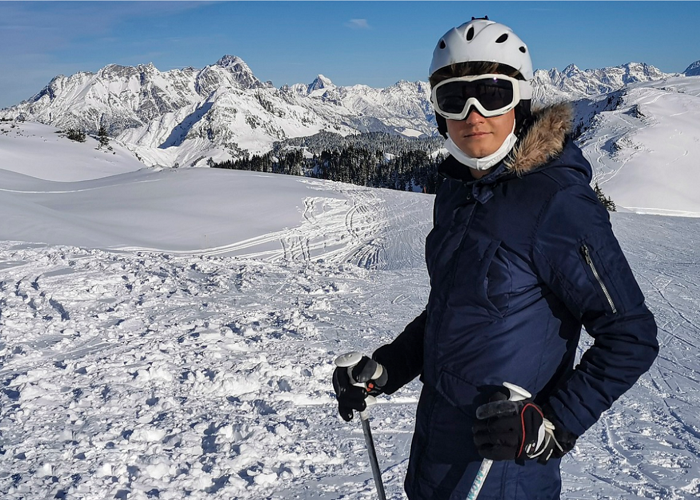One of the essential components of ski and snowboard equipment is goggles. Any skier or snowboarder will agree that visibility problems can ruin a day just as quickly as uncomfortable boots or a subpar chili dog from the lodge. All ski and snowboard goggles will provide some basic wind and cold protection, but in addition to the essentials, there are other important aspects to take into account, including lens type, lens color/tint, replaceable lenses, frame size, and fit.
Let’s look at the various components and characteristics of prescription ski goggles so you can select the one that fits you the best.
Things To Consider While Choosing Prescription Ski Snowboard Goggles
Size
Making sure the snow goggles you choose are the proper size and have features that fit your face should be your first priority. If they’re too huge, you’ll have to adjust them, so they don’t fall off continually. If they’re too tight, they’ll feel uncomfortable.
Triple-Layer Foam
Triple-layer foam will be included in top-tier goggles. This is present around the goggle’s edge and forms a complete seal around your face, keeping out any chilly air. A quality triple-layer foam seals well without pinching your nose or putting undue pressure on your cheeks.
Fit
Pay close attention to the descriptions of the Goggle information when observing the sizing. Each type of sports glasses is identified on rxsafetyusa.com by size along with a description of whether it is a normal google or something more specialized, such as an Asian fit or a goggle designed specifically for women.
Helmet Compatibility
Before hitting the slopes, test your goggles with a helmet or beanie. We advise using low-profile goggles when wearing a helmet so that there is little space between the two. By doing this, cold air cannot sneak in and cause you to fog up. Additionally, for added fog prevention, goggles and helmets with venting will transport warm air through the goggle and out of the helmet.
Strap
For comfort and safety, look for a strap that is easily adjustable and can be wrapped around your helmet. We advise a goggle with a snap on the strap for fine-tuning the fit for a simpler adjustment.
Types Of Lenses Available
On the mountain, a variety of weather conditions are experienced by skiers and snowboarders. There are several lenses available for adjusting to weather changes, but no one lens can operate flawlessly in every situation. To make changing lenses quick and simple, even while wearing gloves, goggles manufacturers created mechanisms.
Examine the details of each lens option so you may choose the features you want.
Interchangeable Lenses
Many pairs of goggles may be swapped out and typically come with two sets of lenses: one for bright lights and the other for low light. You may maintain clear eyesight through abrupt weather changes with a straightforward lens exchange.
One Lense
If you don’t feel like switching lenses, a single middle-of-the-road lens works well in both bright and dim lighting. A single lens is plenty to get you through a variety of weather situations, but it’s not ideal on really bright or overcast days.
Photochromic/Light-Reactive Lenses
When it comes to prescription ski and snowboard goggles, photochromic lenses are not very popular. This is due to the fact that colder temperatures and stronger UV rays tend to make the chemical responsible for the lens tint transition darker. Additionally, mirror coatings—which are highly advised for snow goggle lenses—do not work with photochromic lenses.
Photochromic lenses, on the other hand, function as a single lens that more accurately responds to a variety of circumstances.
Polarized Lenses
Glare reduction is a polarized lens’ principal advantage. Additionally, it makes it safer to distinguish between snow and ice.
Best Lens Color for Prescription Ski Goggles
Ski goggle lens technology, often known as VLT, is evolving (visible light transmission). The VLT measures how much light enters your eyes through the lens. Various lens colors with varying VLT percentages:
- Lenses in the 15–25% VLT range for silver, green, and blue.
- Lenses in the 25–40% VLT range for red, pink, rose, and champagne
- Lenses in the 40–60% VLT range are yellow, orange, and pastel pink.
Since less light passes through a dark lens tint, the VLT is typically lower. If you want to acquire just one set of lenses that can be used in all lighting situations, a VLT of 25–40% is your best bet. When it’s sunny and bright, look at 5-20% VLT. On these low-light days when it is gloomy, snowy, or foggy, a VLT of 40–60% is a decent choice.
Ski & Snowboard Lens Technologies To Consider
Manufacturers of goggles add features to their products in addition to the lens type and color to improve their performance. Observe the following lens characteristics, for example:
UV Protection
Even at the lowest end of the price range, nearly all modern goggles offer 100% UV protection. When you protect your eyes from UV radiation, you can avoid eye tiredness and retinal damage because UV intensity increases with altitude.
Mirrored Lenses
A goggle lens with a coating on the outside reflects more light than one without one. Reduced light infiltration results in less glare and better visibility in bright lighting. Additionally, you achieve the cool Top Gun aviator style, albeit we advise leaving your mirrored glasses at home when you enter a pub.
Anti-Fog Coating
The inside of the lenses can be given a hydrophilic chemical treatment to significantly lessen a goggle’s propensity to fog. Different coatings have varying levels of durability. Because improper goggle maintenance can result in wiping off the anti-fog coating, be sure to heed the manufacturer’s instructions.
Conclusion
It might be inconvenient and even dangerous to wear prescription glasses underneath your goggles if you must. Therefore, it might be wise to spend a little more on prescription ski goggles in place of regular goggles.


